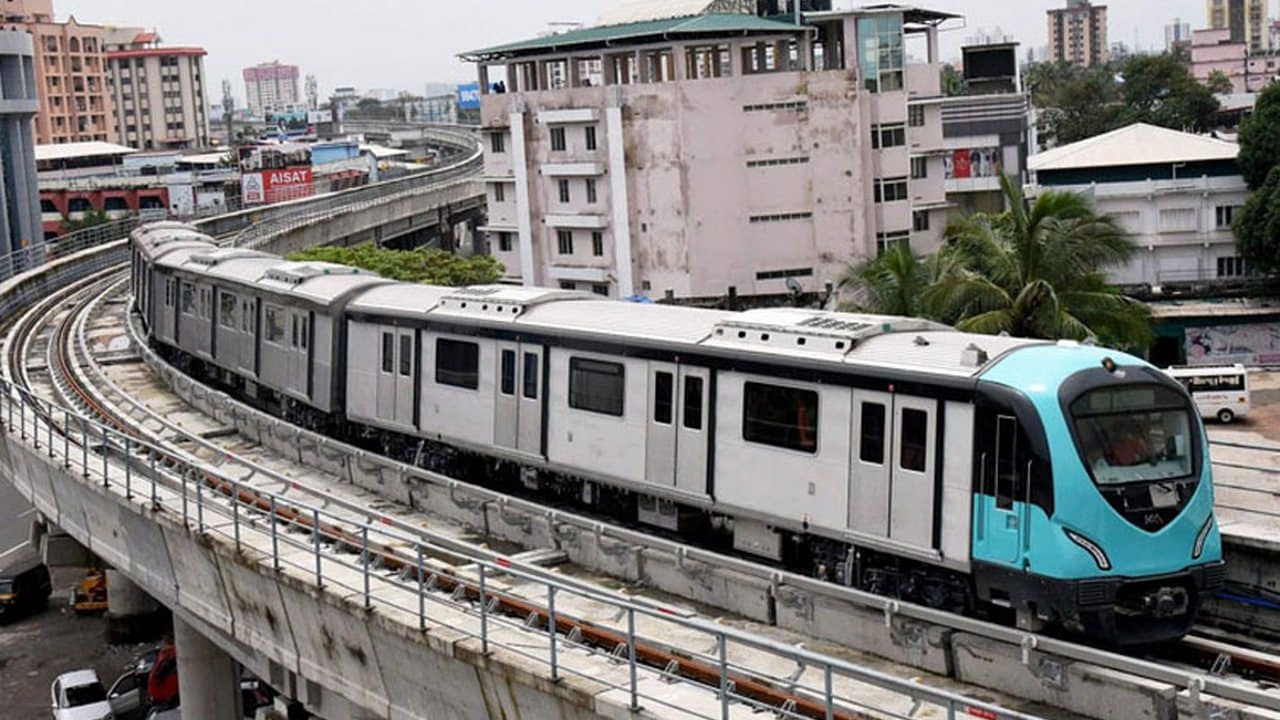
The Rapid Metro Rail has two depots- One at the Sector 55-56 station and the other one at Phase 3 metro station.
Hyderabad metro rail route driver#
A press to talk button enables the commuters to talk to the driver of the train directly. The Rapid Metro system was the first metro system in India to auction the naming rights for its stations. The DMRC took over the control of the Rapid Metro in September 2019. Each station of the rapid metro route is equipped with the Emergency Stop Plungers for passenger safety. Each rapid metro train is designed to carry a load of 800 passengers. A total of 12 trains are there in the Rapid Metro system. The rapid metro route is fully elevated and automated. While phase 1 was opened to the general public in November 2013, the second phase became operational in March 2017. The Rapid Metro was built in two phases. The Rapid Metro route was built and operated by the Rapid Metro Gurgaon Limited (No operated by DMRC). The rapid metro project was initially funded by the DLF, Enso Group and Infrastructure Leasings and Financial Services (IL&FS). The rapid metro map can be seen on the Google map application as follows-Īlso read: Delhi Metro Pink Line Rapid Metro Route: Technical Details Rapid Metro Route in Gurgaon intersecting the Delhi Metro Yellow Line. The Sikandarpur metro station is connected with the Yellow line with a 90 M walkway. The Yellow Line metro can be boarded at the Sikandarpur metro station (Common to both Yellow Line and Rapid Metro). It acts as an interconnection with the Delhi Metro Yellow Line which runs from Samaypur Badli to Huda City Centre in Gurgaon. Rapid Metro Map depicts an aerial view of the Rapid metro route in Gurgaon. The Rapid Metro route provides a smooth interconnection with the Delhi Metro network at the Sikandarpur metro station of the Yellow line metro.Īlso Read: Delhi Metro Pink Line: Route, Map, Timings, Fare Rapid Metro Route Map The rapid metro route consists of the following metro stations. Using the standard gauge tracks, the rapid metro station network is fully elevated. The rapid Metro route consists of 11 metro stations. The rapid metro route is concentrated in Gurgaon city and traverses a total distance of 11.7 Km. However, after the default of IL&FS, the operations of Rapid Metro Gurgaon were taken over by the Delhi Metro rail Corporation (DMRC).Īlso Read: Blue Line Metro Rapid Metro Route: Stations Privately funded, the Rapid metro route did not have any financial contribution from the Union government, Haryana Government or any local body. The Rapid Metro Gurgaon was developed by the Rapid Metro Gurgaon Limited. 
The rapid metro route connects the key commercial centres of Gurgaon, such as Cyber City, Belvedere Towers and DLF Phase 3, among others. Interestingly, the rapid metro route was the first privately funded metro network in the world. The Rapid metro route primarily serves the Gurgaon city and acts as a feeder service to the core network of Delhi Metro. The driving force for conceptualizing Metro Rail in Hyderabad is on account of a dire need for an eco-friendly, solid and quick transport that would withstand the growing demands of an urban city like Hyderabad which is on the way of becoming a popular global destination.The Rapid Metro network is a light metro network in Gurgaon. Metro Rail will allow them to bypass these traffic congestion barriers. Growing urbanisations has led to innumerable problems for commuters who are delayed on account of traffic jams.

Image The main idea behind the concept of Metro Rail is to make sure commuters reach on time to work and not delayed on account of lack of rapid transport. Keeping this in view, the Hyderabad Metro Rail is being developed as one of the largest modern transport systems in the world based upon the PPP model.įorecasting the requirements of ensuring a well-modulated transport system, the Government of India has in its futuristic reform document focused upon a strategy that would promote fast- paced growth that would bring about equitable and sustainable improvements in the overall living standards of the citizens. Transportation in a metro city is a major issue for the Government of Telangana, and Hyderabad is not an exception to this rule.






 0 kommentar(er)
0 kommentar(er)
